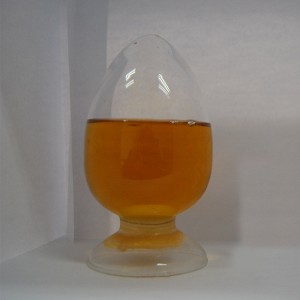Free newsletter Subscribe Sign up to our free newsletter and get the latest news sent direct to your inbox
Although energy companies don’t make a habit of telling potential lease signers about the environmental risks they might face, the Securities and Exchange Commission requires them to inform potential investors. In a 2008 filing, Cabot Industries cited “well site blowouts, cratering and explosions; equipment failures; uncontrolled flows of natural gas, oil or well fluids; fires; formations with abnormal pressures; pollution and other environmental risks.” In 2011, oil companies in North Dakota reported more than 1,000 accidental releases of oil, drilling wastewater or other fluids, with many more releases likely unreported. Between 2008 and 2011, drilling companies in Pennsylvania reported 2,392 violations of law that posed a direct threat to the environment and safety of communities.
No one doubts that fracking fluids have the potential to do serious harm. Theo Colborn, an environmental health analyst and former director of the World Wildlife Fund’s wildlife and contaminants program, identified 632 chemicals used in natural-gas production. More than 75 percent of them, she said, could affect sensory organs and the respiratory and gastrointestinal systems; 40 to 50 percent have potential impacts on the kidneys and on the nervous, immune and cardiovascular systems; 37 percent act on the hormone system; and 25 percent are linked with cancer or mutations.
document.getElementById("comment").setAttribute( "id", "0735ab80cc1ffa05bd0e03e003a9f367" );document.getElementById("9aeeab4798").setAttribute( "id", "comment" );

Global Market Insights, Inc., headquartered in Delaware, U.S., is a global market research and consulting service provider; offering syndicated and custom research reports along with growth consulting services. Our business intelligence and industry research reports offer clients with penetrative insights and actionable market data specially designed and presented to aid strategic decision making. These exhaustive reports are designed via a proprietary research methodology and are available for key industries such as chemicals, advanced materials, technology, renewable energy and biotechnology.
“Different plants take up different compounds,” says John Stolz, an environmental microbiologist at Duquesne University. For example, rice and potatoes take up arsenic from water, but tomatoes don’t. Sunflowers and rape take up uranium from soil, but it’s unknown if grasses do. “There are a variety of organic compounds, metals and radioactive material that are of human health concern when livestock meat or milk is ingested,” says Motoko Mukai, a veterinary toxicologist at Cornell’s College of Veterinary Medicine. These “compounds accumulate in the fat and are excreted into milk. Some compounds are persistent and do not get metabolized easily.”
Market Challenge • Low resistance to water and insect• For a full, detailed list, view our report
Earlier this year, Michelle Bamberger, an Ithaca veterinarian, and Robert Oswald, a professor of molecular medicine at Cornell’s College of Veterinary Medicine, published the first (and, so far, only) peer-reviewed report to suggest a link between fracking and illness in food animals. The authors compiled case studies of twenty-four farmers in six shale-gas states whose livestock experienced neurological, reproductive and acute gastrointestinal problems. Exposed either accidentally or incidentally to fracking chemicals in the water or air, scores of animals have died. The death toll is insignificant when measured against the nation’s livestock population (some 97 million beef cattle go to market each year), but environmental advocates believe these animals constitute an early warning.

CMC is used as a viscosifier and rheology controller in oil drilling fluids sector. Therefore, rising oil exploration across the globe will significantly increase the demand for carboxymethyl in forthcoming years. However, the demand for CMC is not just limited to the above-mentioned industries; its application is also growing in the personal care products sector and used in iron ore and mining activities. Therefore, with the increasing application, the demand for CMC is expected to rise significantly in the near future.
The market data outlined in this report consists of key business parameters as similar market size, market share, key operators, above vendors or the foremost brands being in this industry, which helps to correctly assess the present competitive situation. To improve the understandability, the market knowledge is supplied with figures, pie-charts & tables for quantitative report Alkylphenol ethoxylates of the market.
About FactMR FactMR is a fast-growing market research firm that offers the most comprehensive suite of syndicated and customized market insights reports. We believe transformative intelligence can educate and inspire businesses to make smarter decisions. We know the limitations of the one-size-fits-all approach; that's why we publish multi-industry global, regional, and country-specific research reports.
The growth of the cosmetics and personal care industry remains impervious to the changing economic scenario across the globe. Transforming consumer demographics, and traditional as well as modern preferences have persistently supported the development of the cosmetics industry. While most cosmetic industry titans are adopting clean label strategy, small and medium-sized manufacturers look for cost-effective and efficient ingredients that maintain functions and shelf-life of their personal care and cosmetics products. With the focus on lower-middle and middle-class income group, these cosmetic manufacturers are mushrooming worldwide.
Defoaming Coating Additives Market 2017 – 2021: with Top Countries Data, Product Types, Applications | Oil Drilling Cmc Carboxy Mthyl Cellulose Related Video:
We insist on offering high-quality creation with superior business enterprise concept, honest revenue plus the greatest and fast service. it will bring you not only the high quality solution and huge profit, but essentially the most significant is usually to occupy the endless market for Resinated Lignite For Drilling Mud , Cementing Dispersant , Cementing Chemicals , Our company now has many department, and there have more than 20 employees in our company. We set up sales shop, show room, and product warehouse. In the meantime, we registered our own brand. We've got tightened inspection for quality of product.




